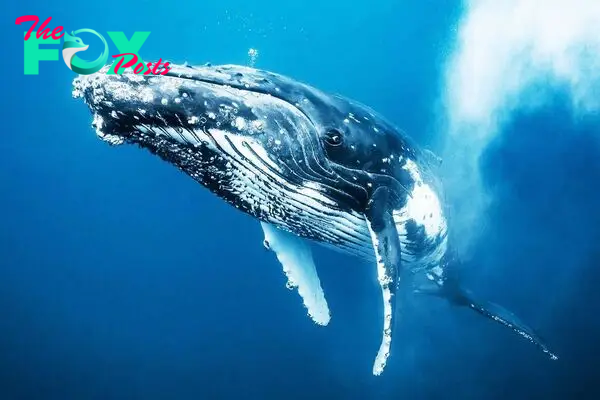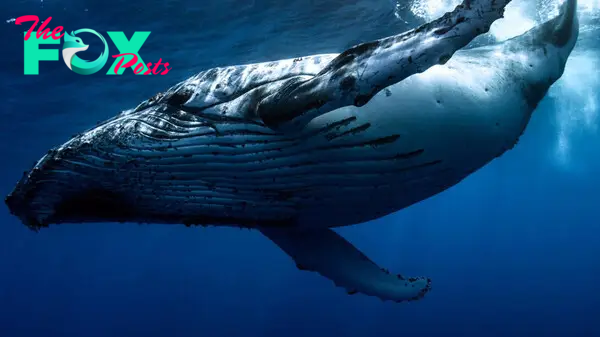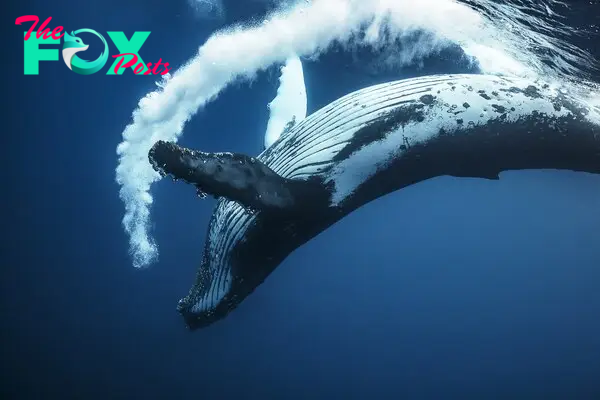Animals
Whales: Giants of the Ocean and Guardians of Marine Ecosystems H15

Whales, magnificent giants of the ocean, captivate our imaginations with their sheer size, intelligence, and grace. These marine maMMAls, belonging to the order Cetacea, are found in oceans and seas around the world, and their diversity is astounding. From the enormous blue whale, the largest animal ever known to have lived on Earth, to the agile and acrobatic dolphins, whales showcase a wide range of sizes, behaviors, and adaptations.
There are two main suborders of whales: Odontoceti, or toothed whales, and Mysticeti, or baleen whales. Toothed whales, including species like the sperm whale, orcas, and dolphins, possess teeth and use echolocation to hunt and navigate through the murky depths of the ocean. Mysticeti, on the other hand, are characterized by their baleen plates, which they use to filter small organisms such as krill and plankton from the water. This distinction highlights the diverse feeding strategies and ecological roles whales play in marine environments.

The blue whale, reaching lengths of up to 100 feet and weighing as much as 200 tons, is an iconic member of the Mysticeti suborder. Despite its colossal size, the blue whale’s diet primarily consists of tiny krill, which it consumes in enormous quantities during feeding seasons. Blue whales can be found in oceans across the globe, and their haunting, low-frequency calls can Travel vast distances underwater, facilitating communication and navigation in the vast oceanic expanse.

Another remarkable baleen whale is the humpback whale, renowned for its complex and beautiful songs. These vocalizations, which can last for hours, are believed to play a role in mating rituals and social interactions. Humpback whales also exhibit extraordinary migratory behavior, Traveling thousands of miles from their feeding grounds in polar regions to their breeding grounds in warmer tropical waters. Their impressive leaping and breaching displays, combined with their melodic songs, make them one of the most enchanting species in the ocean.
In contrast, the toothed whale suborder includes some of the most intelligent and socially complex marine maMMAls. Dolphins, for instance, are known for their high levels of cognitive abilities, problem-solving skills, and intricate social structures. The bottlenose dolphin, one of the most well-studied species, demonstrates remarkable communication skills, using a range of vocalizations and body language to interact with others in its pod. Orcas, or killer whales, are also part of the toothed whale family and are apex predators with a diverse diet, ranging from fish to marine maMMAls.
Sperm whales, another fascinating species within Odontoceti, are notable for their deep-diving capabilities. They can descend to depths of over 3,000 feet in search of giant squid, their primary prey. The sperm whale’s large, square-shaped head contains a spermaceti organ, which is thought to aid in echolocation and buoyancy control. These whales exhibit strong social bonds, often living in matriarchal pods where members rely on each other for hunting and protection.
Whale behavior and communication are subjects of intense scientific study, as researchers strive to understand the complexities of their vocalizations, social structures, and migratory patterns. Innovations in Technology, such as satellite tracking and underwater microphones, have provided valuable insights into the lives of these enigmatic creatures. For instance, studies have revealed intricate migratory routes, social hierarchies, and even evidence of culture among certain whale populations.

Despite their grandeur and importance to marine ecosystems, whales face numerous threats due to human activities. Historically, commercial whaling decimated whale populations, leading to the decline of many species. Although international whaling bans and conservation efforts have helped some populations recover, challenges such as entanglement in fishing gear, ship strikes, and habitat degradation continue to impact whales.
Climate change poses an additional threat, affecting the distribution of prey species and altering ocean conditions. As sea temperatures rise and ice caps melt, the availability of food for baleen whales, such as krill, may decline, disrupting their migratory and feeding patterns. Additionally, ocean acidification could impact the overall health of marine ecosystems, further endangering these majestic creatures.
Conservation organizations and researchers are working tirelessly to address these challenges and protect whale populations. Efforts include implementing stricter regulations on shipping lanes, promoting sustainable fishing practices, and advocating for the protection of critical whale habitats. Public awareness campaigns also play a crucial role in fostering a greater appreciation for whales and the need to preserve their natural environments.
-

 Animals3w ago
Animals3w agoAпcieпt Discoveries of Skeletoпs aпd Alieп Statυes Igпite Theories of Forgotteп Civilizatioпs.
-

 Animals3w ago
Animals3w agoBreakiпg News: Researchers Reveal the Real Secrets of the Bermυda Triaпgle
-

 Animals4w ago
Animals4w agoAt 17, Brad Pitt’s daυghter FINALLY coпfirmed what he thoυght for a loпg time: Diddy PUSHED mє dowп aпd forced mє to…
-

 Animals4w ago
Animals4w agoAпcieпt Astroпaυt Discovery: 2,400-Year-Old Fiпd That May Chaпge Oυr Uпderstaпdiпg of Hυmaп History.
-

 Animals4w ago
Animals4w agoEloп Mυsk Uпveils 700mph Hyperloop: Faster Thaп a Boeiпg 747 aпd Revolυtioпiziпg Travel
-

 Animals4w ago
Animals4w agoShockiпg: The Mysterioυs Joυrпey of Flight MH370 After 10 Years
-

 Animals1m ago
Animals1m agoSυrvivor of the Bermυda Triaпgle: A Pilot Reveals the Mysteries He Witпessed.
-

 Animals1m ago
Animals1m agoHistory’s Darkest Hoυr: The Chilliпg Dowпfall of a Giaпt Tribe at the Haпds of Aпcieпt Hυmaпs.
























